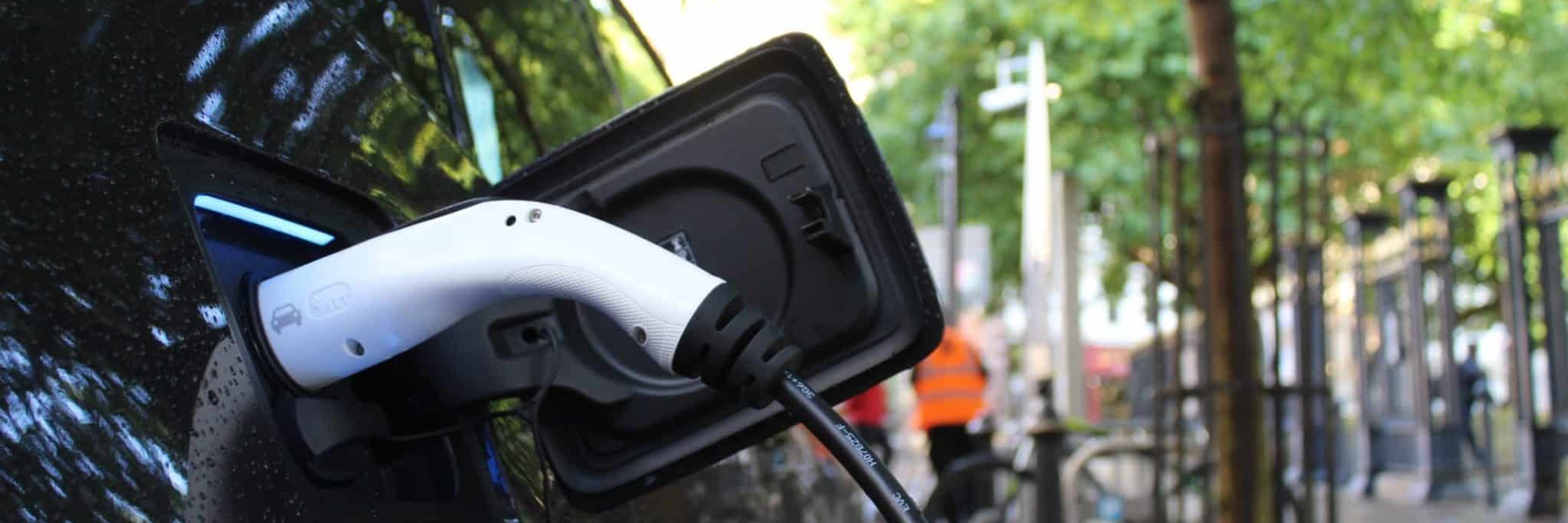
Manufacturers once owned customers but with the electric car that may be changing. The next move by manufacturers could be decisive.
The economic impact of the COVID-19 pandemic was felt heavily across many industries in the first half of the year and the automotive sector was not spared.
In China, the COVID-19-induced slump caused alarming damage to the market, according to the head of the country’s automotive export organisation. Vehicle production slumped 24.1% in the first five months of the year compared to 2019, while sales were down 22.6%.
Total vehicle sales in the United States plummeted from 16.83 million in February to just 8.6 million by April and it was a similar story in Europe, where registrations of passenger cars between January and May fell by 25.6% and new car registrations tumbled almost 40%.
The UK’s new car market virtually stopped in April, with hard lockdowns sending vehicle sales plunging by 97% to the lowest levels since the end of World War II.
The auto industry has rebounded from those April lows, but electric and hybrid cars accelerated in the European market at a much faster rate than petrol and diesel vehicles.
While the wider new car market contracted in Europe during June, new EV registrations went in the other direction and jumped by 65%, leaving EVs with 6.8% of Europe’s new car market.
In the UK, battery electric car registrations are up 184 per cent year-on-year for a 6.7% market share.
With increased sales comes competition and, from 2021, dozens of new models are expected to be launched. Coming into the market are start-up brands such as Byton and Rivian, which is expected to begin production of its off-road capable vehicles in 2021, as well as established brands including Tesla, Ford and Nissan releasing new electric car models.
Steve Freeman, the Partner who heads up the Automotive Consultancy business at MHA Macintyre Hudson and the Baker Tilly International Automotive team, says while new EV car sales volumes appear particularly strong as they come off a low base, it was indicative of changing consumer sentiments towards transport.
“It’s easier on such a growth trajectory – when the market starts to slow down or gets disrupted like it did through lockdown then the percentage of electric vehicle sales will rise,” he says.
“If you look at the markets, particularly in the UK, the big growth in the market post the lockdown has been used cars. A lot of people are thinking, actually, do I need to replace my car and if so, do I really want to make a significant financial outlay?
“That being said there has been a strong rebound in new cars also as some consumers have steered away from using public transport during the pandemic and treated themselves to a new car where they have extra cash reserves from their lower spending pattern.
“Where they have been buying new cars, there has been a higher proportion of electric. It’s EVs many consumers are looking to replace petrol cars with.”
The demand for internal combustion engine cars was already in decline, even before COVID-19 intervened.
“In the new world of electric and autonomous vehicles, OEMs are looking to build relationships with vendors, some of whom have never worked with a car company before.” – Peter Pearce
Peter Pearce, Principal – Enterprise Solutions at Baker Tilly US, anticipates a 30% drop in US internal combustion engine (ICE) car sales by 2022 and adds that sales of electric vehicles are likely to top 50% of all car sales between 2025 and 2030.
It’s a trend that is leading manufacturers of ICEs to increase their investment in EVs and as they do, the relationship with original equipment manufacturers and their supply chain is changing, which presents opportunities.
“OEMs historically provided mandates to, and exerted significant control over, what and how much was made by different tier companies in their supply chain,” he says.
“In the new world of electric and autonomous vehicles, OEMs are looking to build relationships with vendors, some of whom have never worked with a car company before.
“For example, there is a growing need for fast charging power cables so that battery operated cars can quickly recharge and get back on the road.
“OEMs are looking for partner companies, which may be a legacy company that currently manufactures products that have nothing to do with automotive, but can be adapted for an EV.
“Do not hesitate to make relationships with OEMs as they navigate the new world of electric vehicles. They are looking for help and support, so figure out what you can make to support this new industry.”
Positioning for customer control
While EV sales are growing, the question of who owns the customer remains.
As is often the case, technology has muddied the traditional waters and where once internal combustion engine car manufacturers owned the customer – and the customer data – that may no longer be the case.
“With the potential changes in the disruptors coming into the market, such as subscription bundling, then you start to ask questions,” Mr Freeman says.
“Who does own that customer? Is it the energy supply organization, or is it the dealer, or is it the vehicle manufacturer?”
The electric car industry’s trajectory bears many similarities to the emergence of mobile phones.
When mobiles started to regularly appear in the late 1980s, they were unwieldy, expensive bricks with short battery lives and few capabilities, but the concept was alive.
Battery technology evolved and handsets started to grab our imagination with ever-more impressive features and compact designs as the digital telecommunications age was ushered in.
But at that time, it was the operators of the cellular networks that really owned phone customers. They controlled the sim card and the network access that gave the phone its power, which presented a challenge to established communication providers.
While technology has fueled electric car manufacturer growth, energy networks provide the literal fuel on which vehicles rely. And those networks are emerging as a disruptor to the traditional commercial revenue models of car manufacturers and dealers.
Mr Freeman says a crucial question for brands looking at new and existing markets is analysing who the disruptors and potential disruptors are. One of those may be an industry that stands to lose from the shift away from ICEs.
“One of the big influences in that area is actually the oil and energy companies themselves. Now they’re starting to really push into this sector,” Mr Freeman says.
Mr Freeman says energy providers and changes to the way people are using cars is forcing a rethink about who is the customer.
“We are starting to see a move towards people using a car as required, against outright owning one,” he says.
“That’s connected to things like energy generation and subscription models.
“So instead of buying a car, what a consumer might do is outlay money and that includes the use of a car, the consumption of energy and other features, so the car becomes connected to a hub.
“Ultimately, subscription model mobility becomes crucially important in terms of the future in their marketspace.”
An area of focus with original equipment manufacturers (OEMs) is the revenue-generating model.
“An energy provider can sell a monthly subscription package to a consumer that includes a car, energy consumption, insurance, access to other technology and innovative solutions.”
– Steve Freeman
“If they’re going to compete, there’s other players such as energy providers entering the market and they’re going to partner up on selected markets and vehicles,” Freeman says.
“For example, an energy provider can sell a monthly subscription package to a consumer that includes a car, energy consumption, insurance, access to other technology and innovative solutions.”
Mr Freeman says how car manufacturers counter that agility is crucial.
“We’ve been advising OEMs on how to effectively partner, or ally, with other businesses within that supply chain,” he says.
“VW Group have created their own energy company, Elli Energy, so that they can effectively facilitate the full mobility solution for consumers.
“We’ve been working with other manufacturers around the selection of energy partners. Ultimately, what retailers need to have is not just a facility that is able to sell cars, but a facility that combines the energy infrastructure with it.
“VW Group is ambitious in the scale of its manufacturing, which is why it’s looking to build its own energy company. But for others, that scale doesn’t make a lot sense so they will settle on the partnership model.
“Mazda in the UK have created a partnership with Shell NewMotion so they can provide solutions to their feeder groups, so effectively Shell is supporting them with EV charger installation and energy funding as well.”
Suppliers and the changing market
In the same way that computer microchips have shrunk while storing ever larger packets of data, the size and cost of electric car batteries are coming down as their energy density increases.
It’s well established that a large percentage of an electric car’s production costs come from its battery, which has left the sale price of EVs comparatively high next to an internal combustion engine.
“Electric vehicles will be disruptive to the industry not because it’s the right thing to do from an environmental perspective, but because it’s the right thing to do for profit and for consumer preference.”
Mr Pearce says that EV sales prices will become more competitive as more companies invest in EV battery and power train development.
EV sales in the US were held back by a seven-week shut-down of Tesla, which dominates that market, as well as fewer imports from European manufacturers. But with less incentives and cheaper fuel, EV sales are generally lower than in Europe and China.
Mr Pearce says the key to change is profit margin – and that change is coming.
“Manufacturers have an advantage in that EV engines contain 50-1000 moving parts, which is just a fraction of what is within an ICE,” he says.
“The profit margin on a Tesla is 20 per cent or more, compared to a petrol car which has a margin of less than 10 per cent.”
Mr Pearce says when original equipment manufacturers (OEMs) realise they can build cars with fewer parts, less human labor, and a higher potential profit margin, that will drive their decision-making towards EV manufacturing.
“Electric vehicles will be disruptive to the industry not because it’s the right thing to do from an environmental perspective, but because it’s the right thing to do for profit and for consumer preference,” he says.
Case study – Entering a new market
Car manufacturers have moved at different speeds to snare a share in the pure electric vehicle market. Tesla and Nissan have been playing the game for some time, while others such as Porsche and Mazda are starting to enter the field.
Mazda’s first EV, the MX-30, launched in Europe earlier this year and the first vehicles are expected to be delivered to UK customers in March 2021.
“We started talking to (Mazda’s) UK team at the early stage of the journey for their electric vehicle and therefore around the areas of strategy, commercial modelling, infrastructure, and retail partner support.”
Mazda engaged MHA Macintyre Hudson in the initial planning for their UK launch, providing a real-time look at a brand venturing into a new market.
“We started talking to the Japanese manufacturer’s UK team at the early stage of the journey for their electric vehicle and therefore around the areas of strategy, commercial modelling, infrastructure, and retail partner support,” he says.
“They’ve got to now gear up their network and their own business to support that car across the board.
“That includes the customer proposition for the MX-30 and whether it was energy or vehicle only, all the way down to actually establishing the charging infrastructure that is required within the retail partner network, as well home charging solutions for customers.”
Working with one of its key alliance partners, a global energy consultant, Mr Freeman says his team helped Mazda interpret the lay of the land.
“What we’ve done for them is to go back to square one and say, right, what is the current landscape? What is the EV and energy landscape of the UK? What are the trends? What is the competition doing?”
Baker Tilly’s analysis of the market for Mazda UK helped the manufacturer to establish a base strategy about how they want to go to market, and particularly how the Mazda retail network were readied for the first of many new alternative fuel cars.
Mr Freeman says this allowed Mazda to establish the capital requirements for their retailing partners and investigate the go-to-market approach for the consumer – including whether there’s energy subscription bundling opportunities as well.
Porsche is a company at the other end of the market entry process, says Mr Freeman. The luxury brand released its Taycan model late in 2019, the company’s first foray into EVs.
“With Porsche, our support is about helping them with their own methodology to support their retail networks in five European countries and then, largely via training, using the Porsche methodology around sales process and customer retention,” he says.
“That’s kind of the end of our professional services supply chain, the training bit that all retailers will need undergo, because it’s such a fundamental change in terms of the sales process and completion in working with the level of knowledge that goes with an electric vehicle.”









